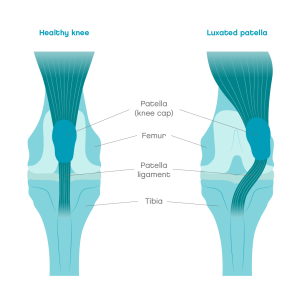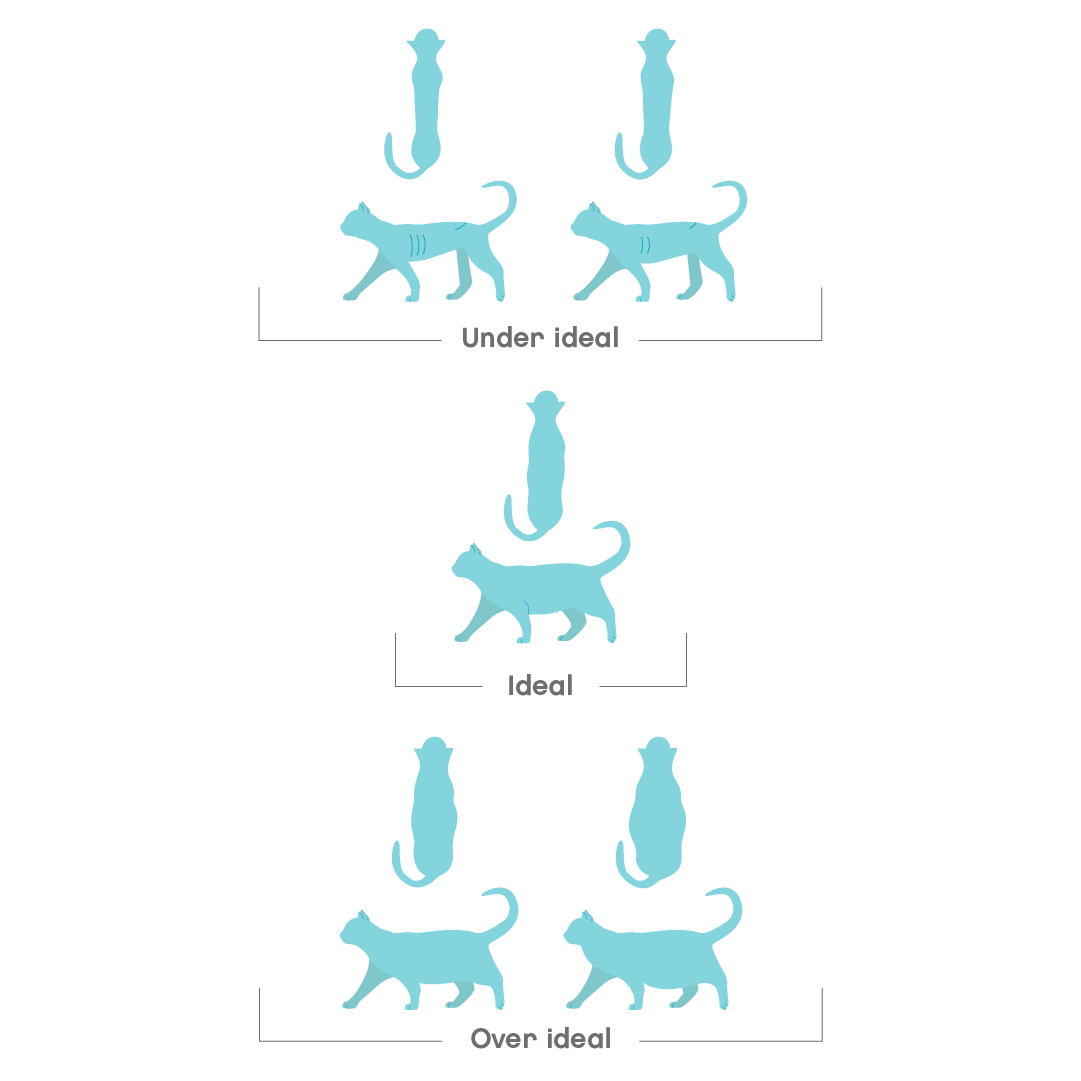Patellar luxation, also called a slipped or dislocating knee cap, occurs when the kneecap slides or pops out of place from the groove when the knee bends. Depending on the severity, the treatment can range from only exercise control to surgery.
Patellar luxation is relatively uncommon in cats and is usually a developmental condition. Cats with patellar luxation aren’t always lame.
Overview
What is patella luxation in cats?
A healthy knee cap, called patella, should never slide or pop out of the femoral grove. If so, we call it a luxating patella or dislocating patella.
Several factors may contribute to its occurrence, such as:
- Growth-related changes in the joint or leg (developmental abnormalities).
- Joint or leg structure changes that are inherited (hereditary).
- Traumatic injury.
The majority of cats will have both knees involved.
Cats with patellar luxation aren’t always lame.
The severity of lameness does not always correlate with the grade of luxation.
Some movement of the patella in the knee grove may be considered normal in healthy cats due to their knees being slightly different from dogs.

Symptoms
Symptoms of patella luxation in cats
Patellar dislocation symptoms:
- Can be an incidental finding detected by your vet on a routine physical examination.
- Lameness may or may not be present.
- Lameness may present as occasional locking of the knee or a shuffling or crouching walk.
- Sudden inactivity or inability to jump.
Risk
Are some cats more at risk of patella luxation than others?
- Devon rex and Abyssinian cats may be more prone. But domestic shorthair cats are overrepresented.
- Developmental patellar luxation occurs at a young age but may be diagnosed at any age.
Common coexisting conditions
- Arthritis can occur as a result of this condition
- The knee cap may dislocate more often over time, damaging cartilage and eventually exposing the bone, causing arthritis and pain.
- Arthritis in the hip joint may be present in up to 40% of cats with patellar luxation.
Diagnosis
How is patella luxation diagnosed?
Your vet will do a hands-on orthopaedic examination and will feel the patella move out of place. Then they will grade it based on its severity.
Grade 1: The patella can slip out of place with hand manipulation but can easily be placed back in position. This grade doesn’t usually cause much of a problem.
Mild patellar subluxation (grade <I) may be noted in healthy cats.
Grade 2: The patella will occasionally slip out of place during your cat’s normal movement but can easily be placed back in position.
Grade 3: The patella is out of place most of the time but can be moved back into normal position.
Grade 4: The patella is out of place and cannot be moved back into normal position.
Radiographs (x-rays) may be necessary to assess your cat’s condition and rule out other problems. Sometimes, CT scans are also necessary.
Vet treatment
Vet treatment for cats with patella luxation
Your vet might recommend medical treatment and/or surgery based on your cat’s needs:
Medical management
- Medication to control inflammation and pain.
- Joint supplements and other arthritis management medications.
- Diet and exercise management. Weight control will also reduce pain.
- Additional treatments such as physiotherapy, acupuncture, massage, stem cell therapy, and laser therapy can be beneficial.
- We have an article on arthritis that offers more information about joint supplements and how to find qualified professionals to help you.
Surgical treatment
- Those experiencing chronic pain or cats with a grade greater than 2 may need surgery. Referral to a board-certified veterinary surgeon is usually necessary.
- The vet may recommend the following surgeries:
- Tibial tuberosity transposition
- Trochlear block recession
- Soft tissue reconstruction
- Surgery may be less effective in cats with severe arthritis.
Home treatment
Home management of a cat with patella luxation
Follow your vet’s recommendation and exercise restriction plan.
- If your cat had surgery, your vet’s plan will be very detailed for the first 6-8 weeks.
- Keep your cat rested by using a cage or leaving them in small rooms of the house with no access to high furniture.
- Keep their minds busy by feeding them in slow feeders and play mats.
- Start physiotherapy as soon as possible and continue for the following 3-6 months as necessary. The sessions will change as the bone heals and the main goal changes.
- A healthy weight is essential. You can check your cat’s body condition score below. Vet nurses can help with weight loss advice.
Body Condition Scoring (BCS) in cats
Body Condition Score (BCS) is a scale that gives a practical evaluation of the fat coverage of your cat’s body. By checking how easy or not it is to feel certain bony areas of the body, a score is then produced. There are several scales, from 1 to 5 or 1 to 9. The ideal body condition lies in the middle, so either 3/5 or 5/9.
The body areas normally checked for fat coverage are:
1. ribs and spine
2. hips and shoulders
3. waist

Here are a few tips on how to do it.
With your pet in a standing position:
- Place your hands on the rib cage and gently feel for each rib, without pressing too hard
- Feel the waist and look from the top and the side (if you have a very furry breed, it may be harder to assess)
- Feel the spine, which runs down the middle of the back
- Feel the top of the hips and shoulders
Will your cat be able to exercise normally after patellar luxation surgery?
Your cat should be able to exercise normally after a reevaluation with your orthopaedic surgeon and, ideally, physiotherapy. It takes at least 6-8 weeks.
Prevention
How to prevent patella luxation
It is not always possible to prevent this disease. Due to its inherited cause, we can avoid passing it on to future generations by not breeding cats with patella luxation.
When to worry
When should you be worried about your cat with patella luxation disease
If your cat was diagnosed with patella luxation, contact your local vet practice if they:
- Do not improve despite treatment.
- Keep limping or walking abnormally.
- Struggle to run, jump, or use the stairs.
- Are vocalising and unwilling to use the leg.
- Have vomiting, diarrhoea, or loss of appetite when medication has been prescribed.
Joii can help:
- If your cat had surgery and you need tips to keep them calm and rested at home.
- If your cat is vomiting, has diarrhoea, or a loss of appetite, when medication has been prescribed.
- If you need help and advice on slowing the progression of arthritis.








